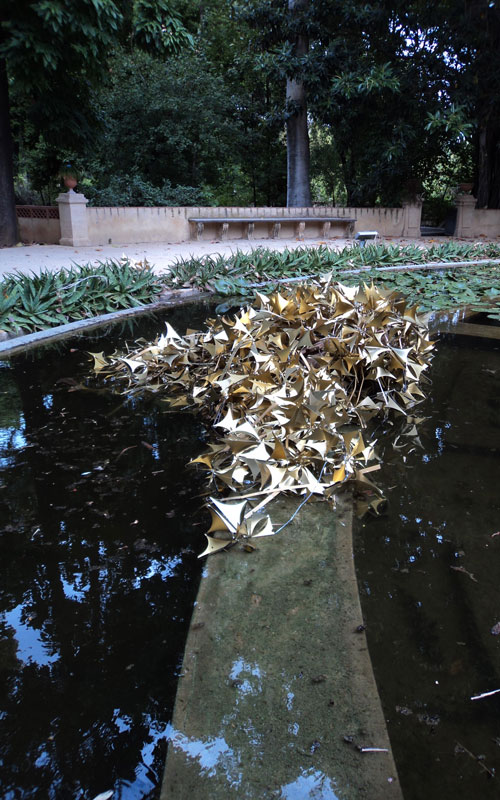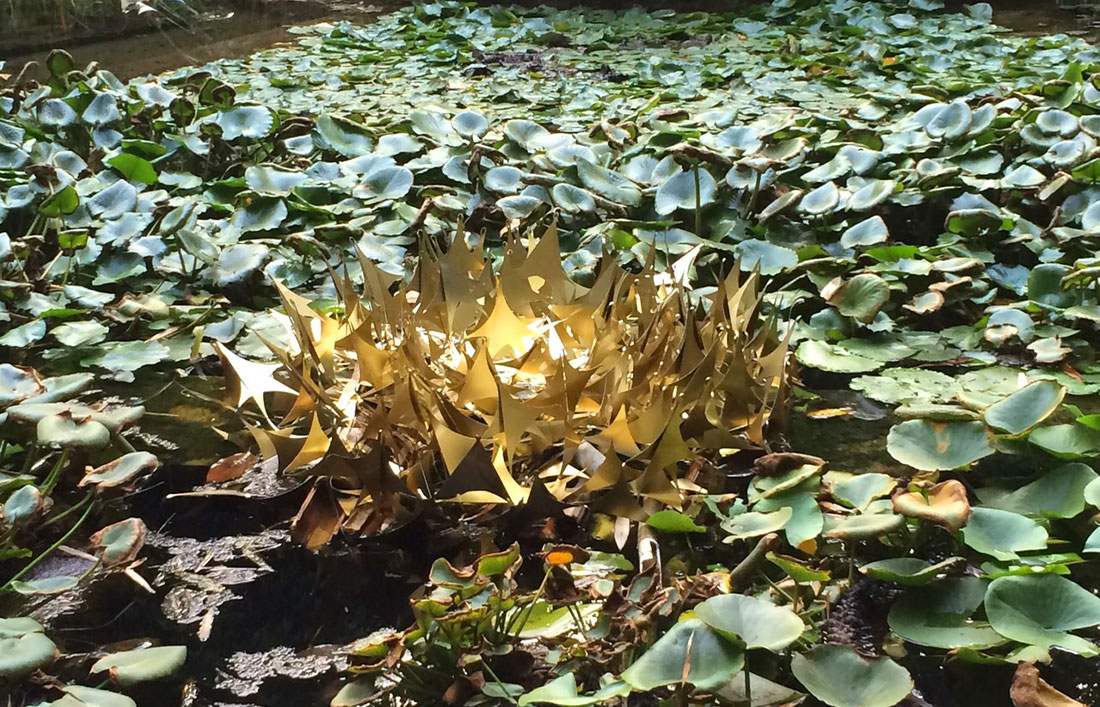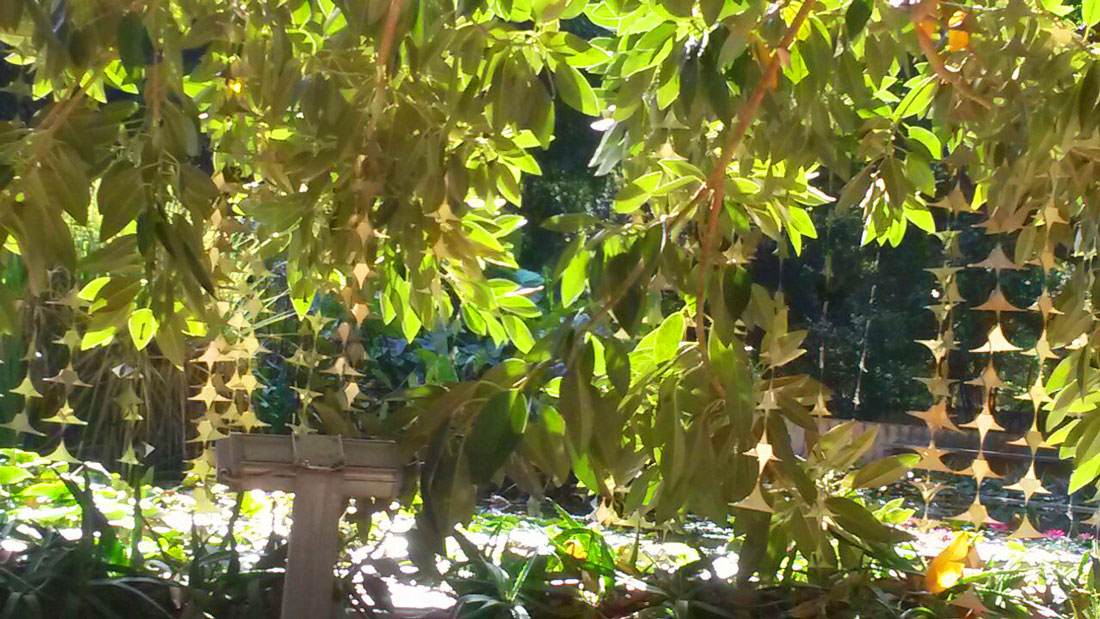




At the Botanical Garden of Palermo, among ancient water basins, centuries-old trees, and tropical greenhouses, Metalbotanica takes shape — a project that intertwines nature and industrial waste. At the heart of the intervention lies an act of transformation: metallic scraps from the production of milk used in canned tuna packaging are recovered, folded, cut, and transformed into imaginary metallic organisms. These grafts, resembling golden metal origami, weave themselves into the living fabric of the garden and its fountains: they appear as fantastic extensions of branches, emerge like bushes within the basins, and float on the water, supported by trunks cut by the gardeners. In some installations, the forms stretch out like golden centipedes, crawling along the edges of the pools. Completing the project are the botanical paintings of Justin Bradshaw, which expand the contemplative dimension of the work. His delicate renderings of plant species converse with the metallic sculptures, creating a counterpoint between scientific observation and poetic imagination. Metalbotanica is therefore a hybrid ecosystem, a garden within a garden, and, as always, a reflection on the possibility of rebirth through discarded materials and on the beauty that emerges from the margins.
All’Orto Botanico di Palermo, tra vasche d’acqua antiche, alberi secolari e serre tropicali, prende forma Metalbotanica, un progetto che intreccia natura e scarti industriali. Al centro dell’intervento c’è un gesto di trasformazione: gli scarti metallici della produzione di latte destinato al confezionamento del tonno in scatola, vengono recuperati, piegati, tagliati e trasformati in organismi metallici immaginari. Questi innesti, simili a origami di metallo dorato, si insinuano nel tessuto vivente del giardino e delle sue fontane: compaiono come prosecuzioni fantastiche dei rami, affiorano come cespugli nelle fontane , galleggiano sostenuti da tronchi tagliati dai giardinieri. In alcune installazioni, le forme si allungano come scolopendre dorate, che percorrono i margini delle vasche. A completare il progetto, i dipinti botanici di Justin Bradshaw ampliano la dimensione contemplativa dell’opera. Le sue rappresentazioni delicate delle specie vegetali dialogano con le sculture metalliche, creando un contrappunto tra l’osservazione scientifica e l’immaginazione poetica. Metalbotanica è dunque un ecosistema ibrido, un giardino nel giardino e come sempre una riflessione sulla possibilità di rinascita attraverso gli scarti e sulla bellezza che emerge dai margini.